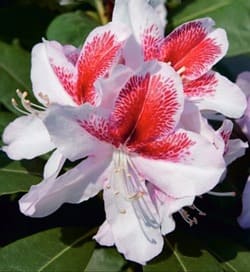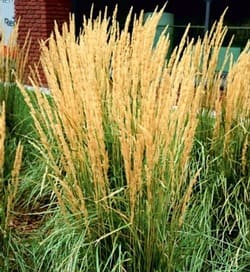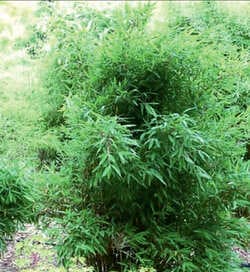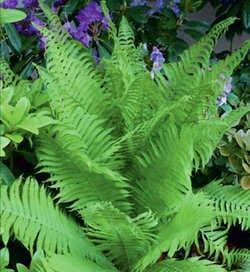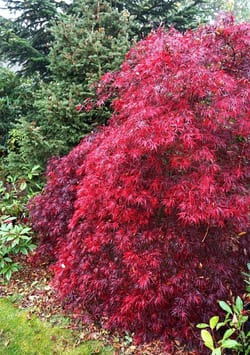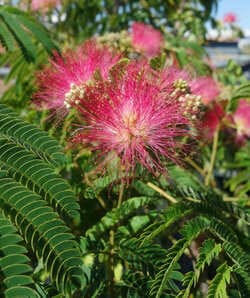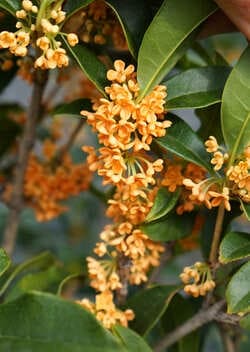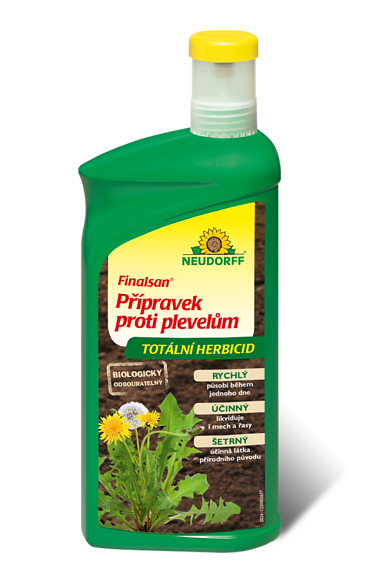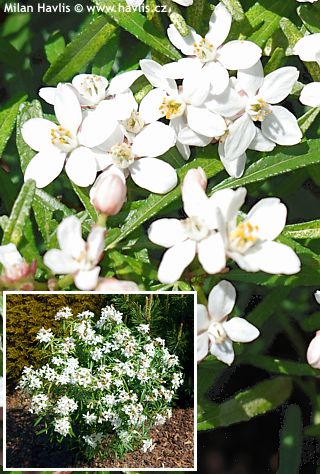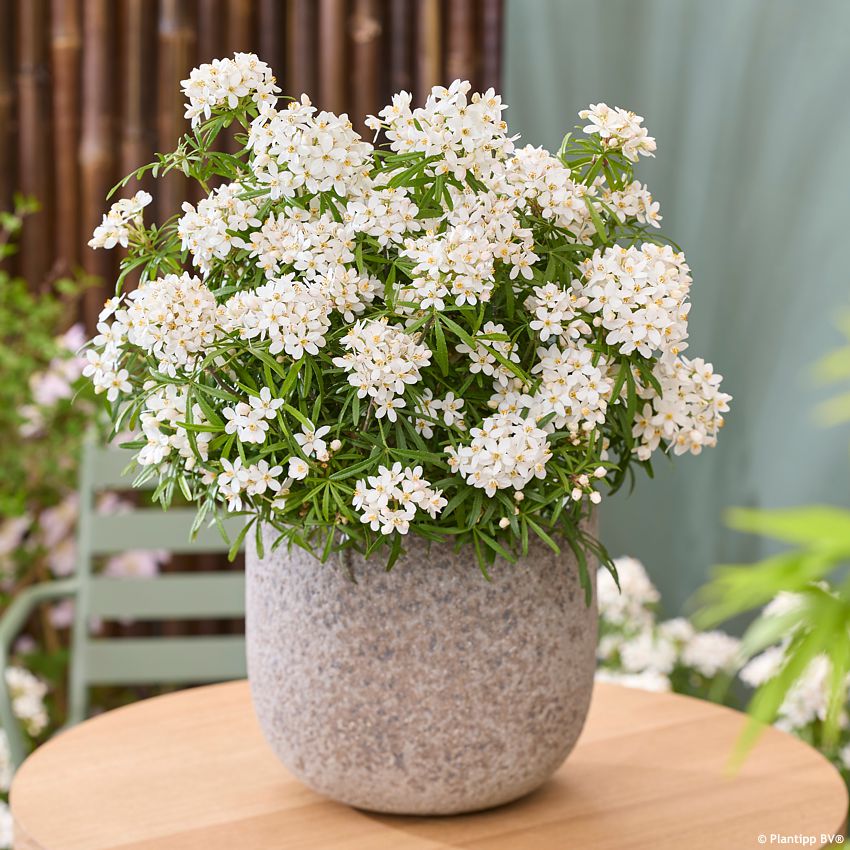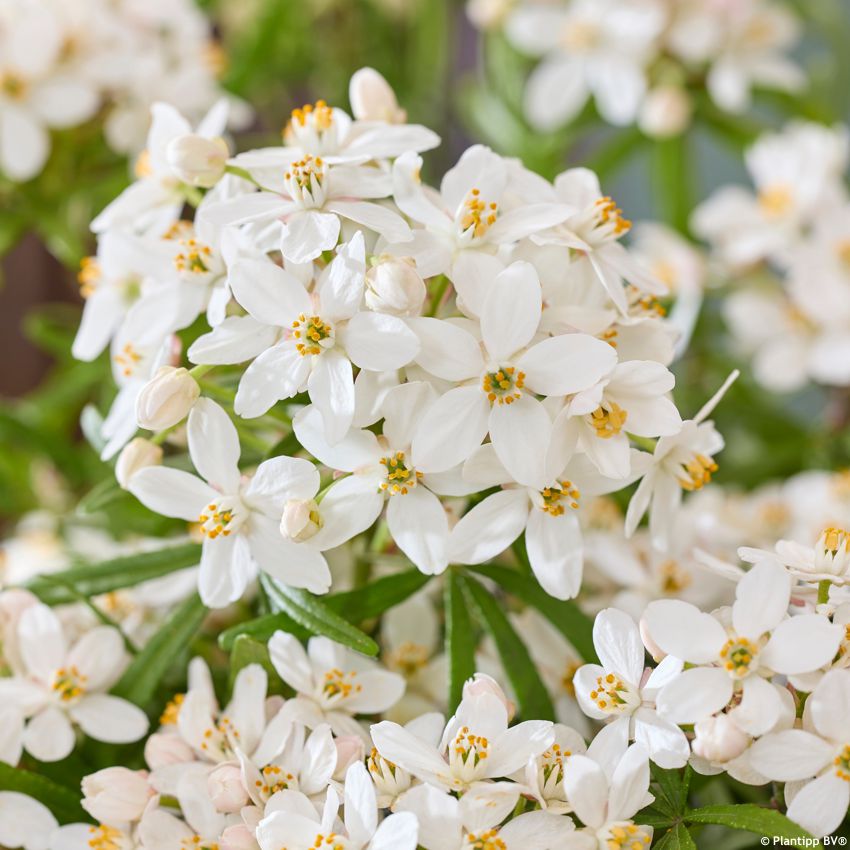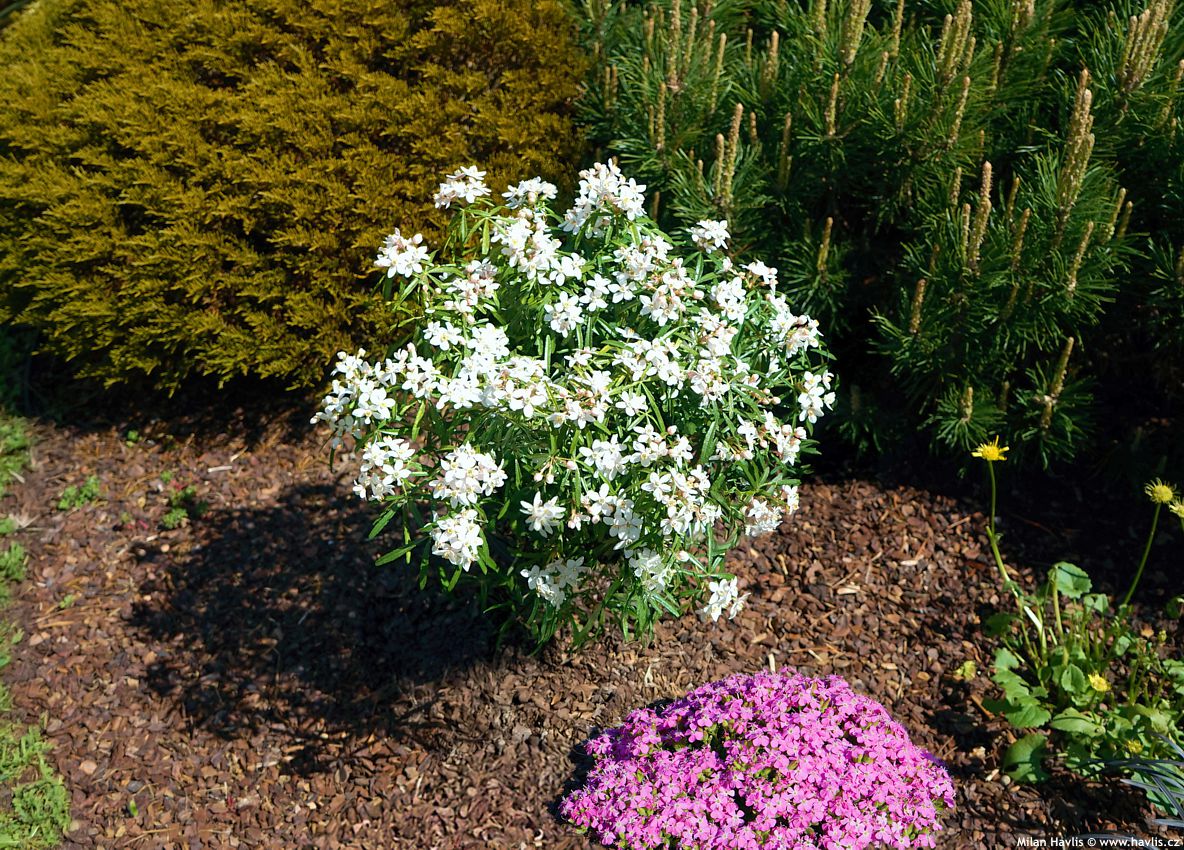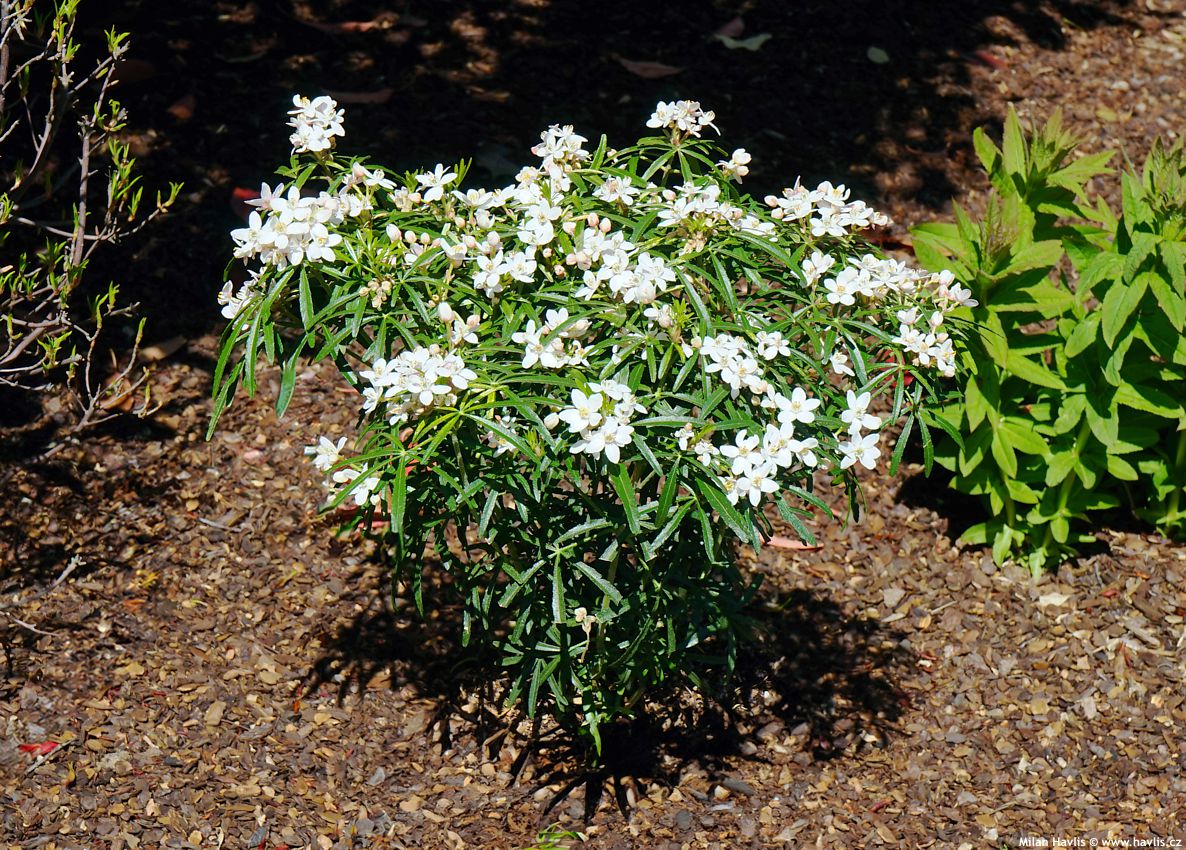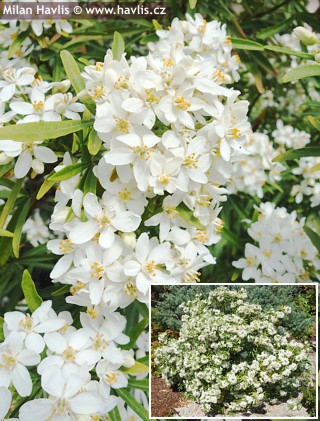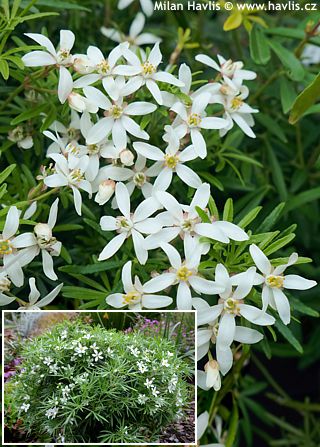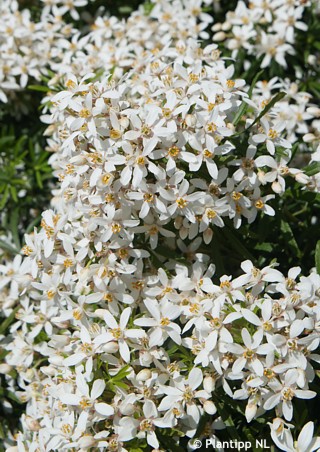Choisya 'Lissbrid' SCENTED GEM Mexican orange blossom
Choisya
The first mentions of the genus Choisya are linked to Mexico and the southwestern United States, from where these evergreen shrubs with aromatic leaves and orange‑blossom‑like flowers were brought to Europe in the 19th century. The genus was named in honour of the Swiss botanist Jacques Denis Choisy (1799–1859), who studied plants of the rue family (Rutaceae). The best‑known species became Choisya ternata, cherished for its abundant flowering and citrus fragrance, widely cultivated especially in England and southern Europe, where mild winters allow it to overwinter reliably. Both flowers and leaves contain essential oils rich in linalool, limonene and other terpenes, which give it its characteristic citrus scent reminiscent of orange blossom. For this reason it was traditionally planted near dwellings in Mexico as a fragrant shrub, and in modern times its extracts have found use in perfumery as a delicate citrus‑floral note. This all led to the common English name Mexican orange blossom.
With great enthusiasm – and it must be admitted, with some surprise – hybrid Choisya began to be spoken of in Central Europe only at the turn of the millennium, even though the cross itself had been created a decade earlier. It combined the broad‑leaved but tender Choisya ternata with the narrow‑leaved and exceptionally resilient Choisya dumosa var. arizonica, native to Arizona and Texas and growing up to 1200 metres above sea level. The result was a hybrid given the name Choisya × dewitteana, combining the elegance and fragrance of the Mexican species with the toughness of its American partner. The cross was made by the English breeder Peter Moore, who had already introduced the first cultivar, Aztec Pearl, in 1989. It reached our gardens only much later, though. First it spread from British nurseries into Western Europe, and after 2010 we subjected it to a rigorous cold‑hardiness test in the harsher conditions of Central Europe. To our surprise it passed without a single loss and thus became an unexpected breakthrough, opening the way for an entire new wave of cultivars carrying this “Arizona gene” – a guarantee of reliable hardiness even for Central Europe.
SCENTED GEM is a Mexican orange blossom variety whose name is no exaggeration: it is highly fragrant and truly a jewel. It originated as a selection of previous cultivars and was bred by Peter Catt from Liss Forest Nursery Ltd in Hampshire in England. It was first introduced at the French Salon du Végétal trade fair in 2017, and the following year it ranked second in the "Best Ornamental Variety" competition of the prestigious English magazine Horticulture Week (established in 1840, the second oldest after the Curtis's Botanical Magazine). The cultivar is protected under European patent no. 59035 from 2021.
SCENTED GEM choisya has something from both its forerunners – the cultivars Aztec Pearl and White Dazzler. The first to notice is its semi-rounded habit and dense growth even at a young age. It bears evergreen, medium green, and very glossy leaves which are divided into palmate, elongated, and narrowly lance-shaped leaflets. When crushed, the leaves release a pronounced, spicy aroma, but they are not meant for culinary use. From late April to early June, it produces a profusion of star-shaped, 5-petalled flowers. They are white but open from pink buds which is why its provisional name was Pink Bud. They are decorated with yellow stamens at their centers, and release a strong and sweet fragrance. Both their scent and structure are reminiscent of orange blossoms, which is why this plant is called Mexican orange blossom in English. Late in summer, it reblooms and continues to open its flowers till the last sunny and warm days of autumn.
It is still a relatively new cultivar, so its mature height cannot yet be definitively stated. However, based on its growth so far, the breeder estimates it will reach about 1.5 meters in height and width in a beautifully domed shape. Thanks to its unique leaf structure, Mexican orange blossom is ideal as a specimen shrub for representative spots and is also great in mixed borders among other evergreen shrubs of contrasting foliage and habit. It can also be used for exclusive, informal hedges. Being evergreen makes it perfect for planting in areas you frequently visit or see, even outside the growing season—such as near French windows in living rooms, along entrances, or in front of office buildings, where it provides lovely greenery year-round.
The strong winter hardiness of hybrid Choisya in Europe likely came as a surprise even to the breeder of the original hybrid. Dutch growers discovered it after several unusually harsh winters post-2010. While other commonly grown evergreens such as laurels and photinias, which are also cultivated here, suffered severe damage, Choisya plants remained completely unaffected by frost, even at -23 °C. We ourselves have tested their remarkable resistance to winter sunlight, which doesn’t scorch their leaves. The foliage remains beautifully lush and green throughout the year. Old leaves only drop after several years, keeping the shrub dense and opaque, which has led to its use in highly attractive and uniquely foliaged hedges.
Mexican orange blossom is best grown in the same way as sun-loving rhododendrons. It has shallow roots and thrives in acidic, well-drained, nutrient-rich soil, preferring dryness over wet conditions. It will not survive in heavy clay or water-retentive soil. We strongly recommend planting it with mycorrhiza (root fungi), which ensures good root establishment and nutrition, particularly during the first critical months after planting. Once established after the first year, it requires minimal or virtually zero care. SCENTED GEM has so far been tested for hardiness down to -23 °C (USDA zone 6) and further trials continue.
Last update 27-04-2025












